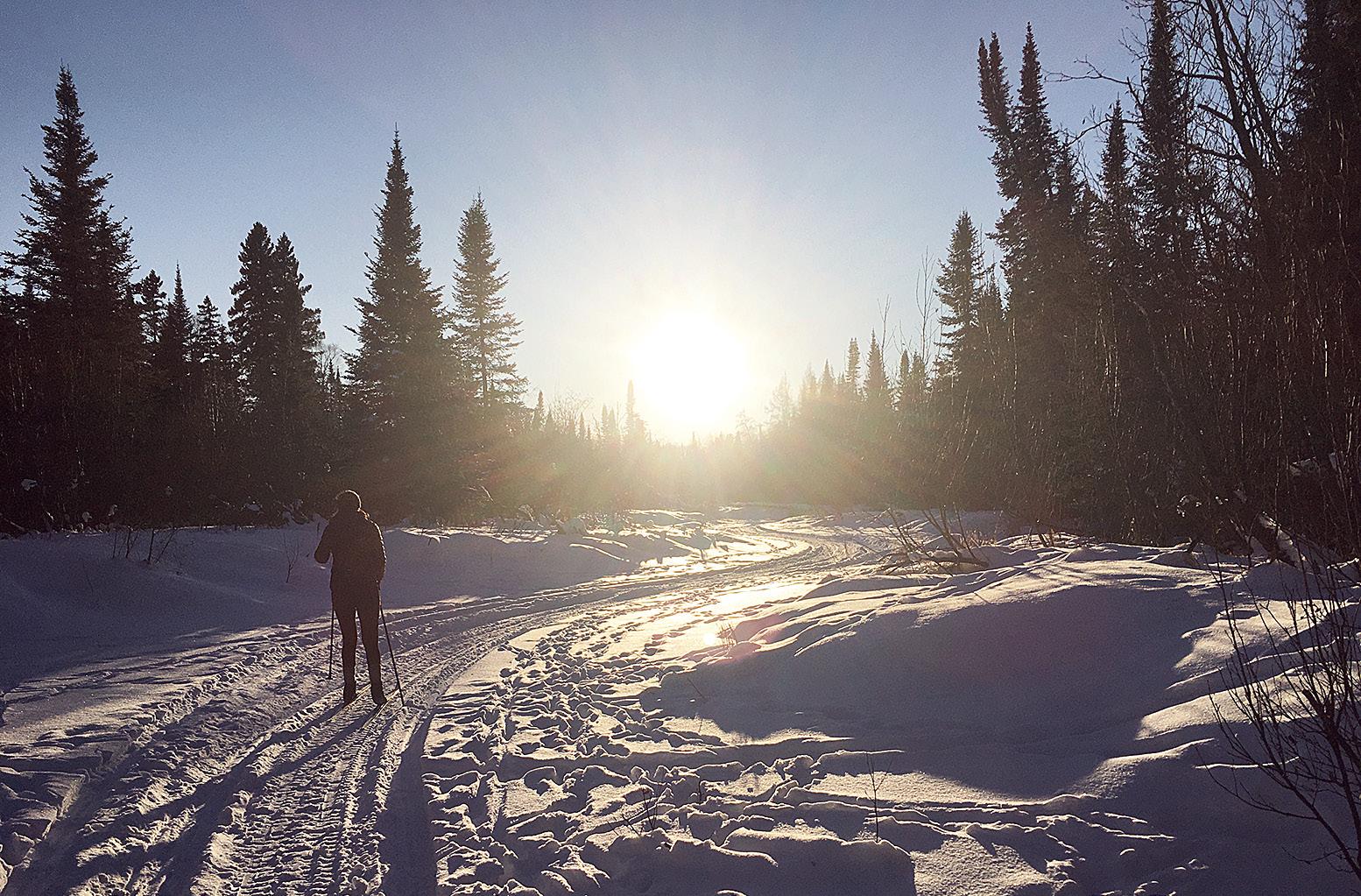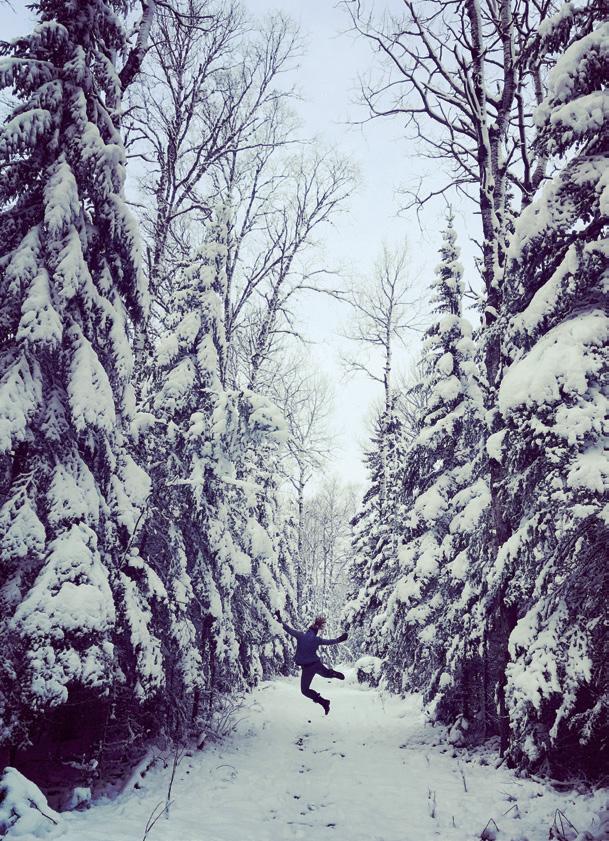
3 minute read
Wild Traditions
Wild Traditions Through Time: A Swift History of Skiing
By Julia Prinselaar
Advertisement
It was March 1995, and for only the second time ever, the Nordic World Ski Championships were held outside of Europe and descended on the small town of Thunder Bay.
As a grade school student, I remember standing on the sidelines of a ski track with my classmates, cheering on dozens of skiers as colorful flashes of Spandex zoomed past our crowd.
Local news agencies report that an estimated 13,000 people braved temperatures approaching -30 C to partake in the championship’s opening ceremonies, welcoming roughly 600 athletes to the stadium. Within the span of the event’s 10 days, however, unseasonable temperatures soared into record double digits during competitions, forcing organizers to think fast and avoid a looming disaster. Truckloads of woodchips were brought in from the local paper mill and chemicals were sprayed onto the trails to stabilize the snow and combat rivers of mud.
As it goes, the Nordic World Ski Championships moved on to shine an economic light on other host cities. The Big Thunder National Training Centre, which hosted the games, closed a year later.
But a rich history of skiing was sewn into the cultural tapestry of the North Shore many generations before.
With a similar climate and familiar forests, Finnish immigrants arrived in waves to areas of North America. According to the Canadian Encyclopedia, the first FinnThe author skiing along the McIntyre River in Thunder Bay. | JULIA PRINSELAAR
ish people to make landfall were part of a group of settlers who established the colony of New Sweden along the banks of the Delaware River between 1641 and 1655. A couple of centuries later, others settled in modern-day Alaska, which was part of Russia at the time.
Until the beginning of World War I, most Finnish migrants ended up in the United States, although a sizeable minority arrived as pioneers in Canada. During the mid-20th century, tens of thousands of Finnish homesteaders settled throughout the country, particularly in urban areas, British Columbia, and Northern Ontario in communities like Timmins, Sudbury, Sault Ste Marie and Thunder Bay.
Finnish folks brought Nordic traditions and recreation tied to the landscapes that represented their cultural identity and homelands. Perhaps the two most celebrated activities practiced by many people today are sauna-bathing and cross-country skiing, which coincidentally, pair very well together.
Before written history, rock paintings and skis preserved in bogs were some of the first indicators that hunters and trappers used skis at least 5,000 years ago, but many contend that skis are even older than that. According to Morten Lund and Seth Masia for the International Skiing Association, skis came to be used across the Eurasian Arctic regions during the stone age as hunters followed reindeer and elk herds from central Asia’s Altai region, moving to the northwest and northeast, using skis covered with fur that worked like modern climbing skis.
Throughout the Middle Ages, Swedish and Danish farmers, hunters and warriors regularly used skis. By the 18th century,
Outdoor & Casual Clothing, Footwear & Equipment Guided Tours & Rentals for all Seasons Open Daily, Year Round On the East Bay in Grand Marais 218.387.3136 • stoneharborws.com Gunflint Pines Year-Round Cabins Ski/Snowshoe Rentals Ice Fishing Gift Shop & Grocery Pizza & Ice Cream Open to the Public South of the Border
C·a·f· e Breakfast Served All Day Lunch • Homemade Soups
We’re Open Before the Fish Bite!

Open 5 am - 2 pm Everyday!











